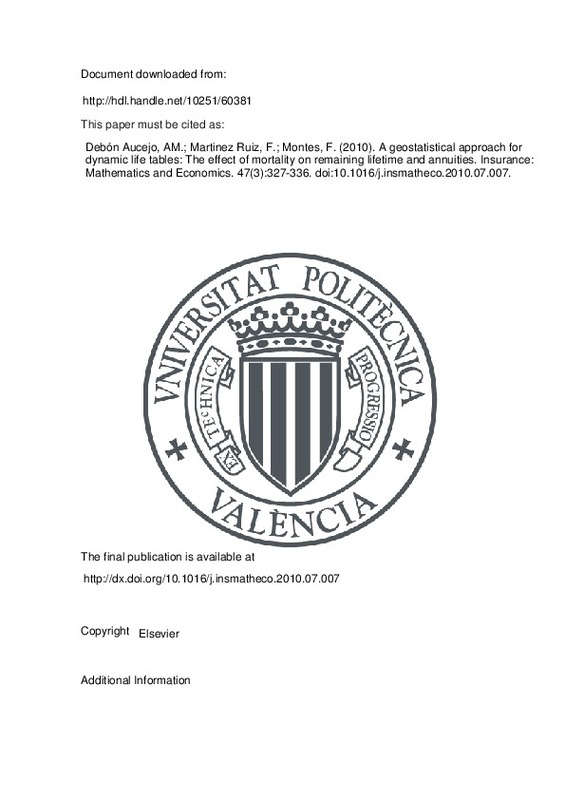JavaScript is disabled for your browser. Some features of this site may not work without it.
Buscar en RiuNet
Listar
Mi cuenta
Estadísticas
Ayuda RiuNet
Admin. UPV
A geostatistical approach for dynamic life tables: The effect of mortality on remaining lifetime and annuities
Mostrar el registro completo del ítem
Debón Aucejo, AM.; Martinez Ruiz, F.; Montes, F. (2010). A geostatistical approach for dynamic life tables: The effect of mortality on remaining lifetime and annuities. Insurance: Mathematics and Economics. 47(3):327-336. https://doi.org/10.1016/j.insmatheco.2010.07.007
Por favor, use este identificador para citar o enlazar este ítem: http://hdl.handle.net/10251/60381
Ficheros en el ítem
Metadatos del ítem
| Título: | A geostatistical approach for dynamic life tables: The effect of mortality on remaining lifetime and annuities | |
| Autor: | Martinez Ruiz, F. Montes, F. | |
| Entidad UPV: |
|
|
| Fecha difusión: |
|
|
| Resumen: |
Dynamic life tables arise as an alternative to the standard (static) life table, with the aim of incorporating
the evolution of mortality over time. The parametric model introduced by Lee and Carter in 1992 for
projected ...[+]
|
|
| Palabras clave: |
|
|
| Derechos de uso: | Reserva de todos los derechos | |
| Fuente: |
|
|
| DOI: |
|
|
| Editorial: |
|
|
| Versión del editor: | http://dx.doi.org/10.1016/j.insmatheco.2010.07.007 | |
| Código del Proyecto: |
|
|
| Agradecimientos: |
This work was partially supported by grants from the MEyC (Ministerio de Educacin y Ciencia, Spain project MTM2007-62923 and project MTM2008-05152) The research by Ana Debon and Francisco Martinez-Ruiz has also been partially ...[+]
|
|
| Tipo: |
|







![[Cerrado]](/themes/UPV/images/candado.png)


